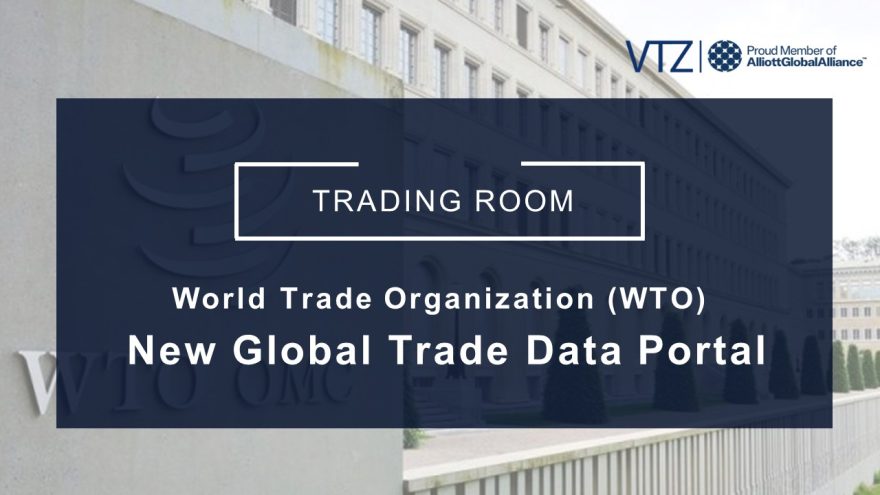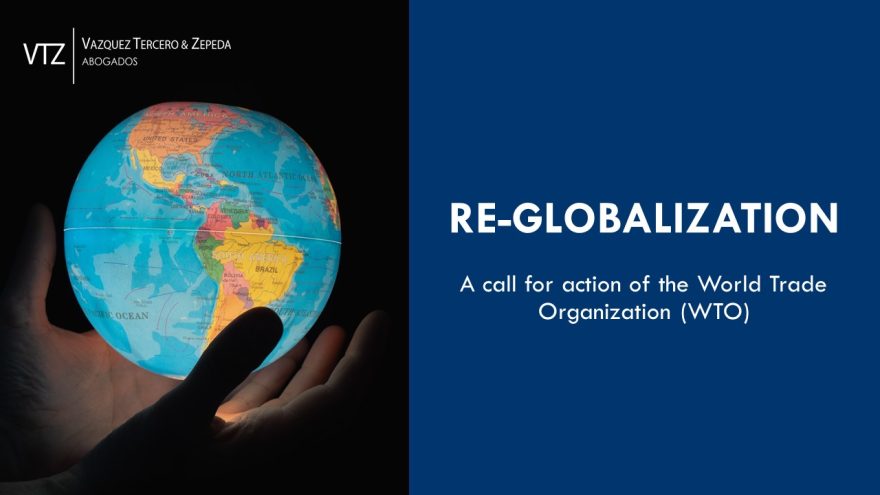Accession Request of China to the Comprehensive and Progressive Agreement for Trans-Pacific Partnership (CPTPP)
On September 16, 2021, China formally applied for accession to the Comprehensive and Progressive Agreement for Trans-Pacific Partnership (CPTPP) with New Zealand, which serves as the treaty’s depositary. For our view, regarding Non-Market Economy and USMCA, click here.
Our team shares the following analysis and insights.
China and CPTPP
China’s request to be a CPTPP member must be examined considering the trade war with the United States, among other events. China is currently re-shaping its trade policy with the aim of ensuring that its exports have access to markets and regional value chains, as well as strengthening trade ties.
BREAKING: China on Thursday, Sept. 16 formally applied to join the Comprehensive and Progressive Agreement for Trans-Pacific Partnership or CPTPP, says the Ministry of Commerce.https://t.co/20j6ntivUX pic.twitter.com/IiqZ23t8v0
— Zichen Wang (@ZichenWanghere) September 16, 2021
Signed on November 15, 2020, the Regional Comprehensive Economic Partnership (RCEP) is part of this Chinese strategy. This trade agreement will eventually create a mega free trade zone in Asia for 15 countries, including China, but it is limited in terms of the level of trade deepening because it covers 91% of tariff lines.
In contrast, CPTPP deepened trade relations between the parties to a greater extent, liberalizing 98% of tariff lines. In this sense, China’s accession request should not come as a surprise, especially if you have been following our newsletters.
CPTPP in Numbers
The CPTPP is a free trade agreement signed by 11 countries, but it only applies – for the moment – between Mexico, Japan, Canada, Australia, New Zealand, Singapore, Vietnam, and Peru; while Chile, Brunei, and Malaysia have not yet approved the treaty per their domestic legal procedures.
If approved by all parties, the CPTPP has the potential to be the most important free trade agreement in the Asia-Pacific region, the third most important in the world in terms of value because it brings together economies that contribute to 13% of world GDP (World Bank, 2020) and 15% of total world trade (2019 figures).
For Mexico, the CPTPP represents approximately 5% and 11% of its exports and imports in 2020, respectively, or 8% of its total trade. According to official figures, Mexico has received US$81,803.2 million in foreign direct investment (cumulative) from CPTPP countries, representing 13% of Mexico’s foreign direct investment.
China
China is a key trading partner for CPTPP countries. The bilateral trade in goods with China represents 20% or more of 6 of 11 CPTPP parties’ total trade.
For 6 of the 11 #CPTPP countries, China accounts for more than 20% of bilateral merchandise trade. It's hard to reject membership for a major trading partner; more likely, concerns about Chinese compliance would prolong the negotiating process.
— Peterson Institute (@PIIE) September 28, 2021
Learn more: https://t.co/fl2XYPt1aW pic.twitter.com/XkVDdjT0DF
In the case of Mexico, our country has a significant trade deficit with China (65,639 million USD in 2020), as shown in the following chart:
Although China has been Mexico’s second-largest trading partner since 2003, this has not translated into more foreign direct investment from China. Could an CPTPP reverse this trend?
China's CPTPP Accession Process
Upon receipt of the accession application, the CPTPP Commission will determine whether to create a working group that negotiates the terms and conditions of China’s accession. China will have to convince CPTPP parties that it is willing to comply with new generation rules, such as digital trade, economic competition, state-owned enterprises, subsidies, intellectual property, and labor regulation.
This stage is crucial and complicated. China requires consensus from all CPTPP parties to start negotiations. In other words, any CPTPP party can veto the entry of a new member with its simple opposition. The task of overcoming this challenge will not be simple.
Australia and Canada
On the one hand, Australia and Canada have reasons to block a working group. Both countries have disputes against China at the World Trade Organization (WTO), as a result of alleged trade violations regarding WTO agreements.
Where Does Mexico Stand?
Mexico, on the other hand, has not publicly shown any opposition or acceptance of China’s CPTPP accession request. In this regard, we consider it likely that the Mexican Government will reject or try to resist a Chinese accession as a result of the USMCA; we simply must look at the Mexican negotiation experience with China’s WTO accession. In any case, the Ministry of Economy should consider Enrique Dussel’s question: is the Mexican productive sector prepared for an FTA with China?
China & Taiwan have both formally applied to join the #CPTPP. Here's how accession works. #PIIECharts pic.twitter.com/e5FbsWHTYN
— Peterson Institute (@PIIE) September 29, 2021
The CPTPP Working Group
If the Commission approves a working group, China must submit a plan to ensure its compliance with CPTPP. China must also submit an «offer» detailing market access conditions and a list of non-complying rules.
If accession is agreed, China will approximately have six months to complete the necessary domestic reforms for CPTPP compliance.
USMCA: Treaties with Non-Market Economies
Per the United States-Mexico-Canada Agreement (USMCA), Mexico and Canada must consider Article 32.10 USMCA regarding Free Trade Agreements (FTA) with a Non-Market Economy Country (NME) in the event of initiating negotiations with China.
This provision provides that any USMCA party that intends to negotiate an FTA with a non-market economy country –i.e. China– must notify its intention to the other parties with at least three months’ notice. In addition, the article also establishes that the negotiating party will have to provide the texts of the agreement to the other parties before its signature. Only if the said party signs an FTA with China, the other parties will be able to terminate the USMCA.
Evidently, none of this is happening yet and may never happen if the CPTPP Commission rejects the accession of China. Otherwise, Mexico and Canada would have to notify the United States of their intention to negotiate with China; share the texts of the agreement; and, if Canada and/or Mexico sign the agreement, the United States could decide to terminate the USMCA and leave the agreement within six months after informing such a decision.
Regardless of Article 32.10 USMCA, Article 34.6 USMCA develops rules on the withdrawal of the treaty, which would also take effect within six months after its notification. In other words, the United States could withdraw from the USMCA during the negotiations with China without having to wait for the texts or the eventual signature.
China in the Community of Latin American and Caribbean States (CELAC)
The President of China, Xi Jinping, gave a virtual speech during the VI Summit of the Community of Latin American and Caribbean States (CELAC), held on September 18, 2021, in Mexico City. We highlight that the President of China was the only third non-Latin-American party to participate in the summit.
In this regard, the President of China reaffirmed his support and cooperation to the region for the socio-economic recovery of Latin America. The message was clear. China seeks closer ties and support from the region to celebrate new FTAs (e.g. with Uruguay) and its accession to CPTPP, as well as to strengthen its trade relations with the Latin American region.
Taiwan Also Seeks CPTPP Membership
Just one week after China’s application, Taiwan (China-Taipei) also submitted its formal application to join the CPTPP on September 22. Like China, Taiwan’s application was to be expected sooner or later, according to public statements by the Taipei Economic and Cultural Office in Mexico.
Rections from China
China’s Foreign Ministry spokesman, Zhao Lijian, expressed the following:
There is only one #China in the world & #Taiwan is an inalienable part of China's territory. With regard to the #CPTPP, we firmly oppose Taiwan's accession to any agreement or organization of official nature. pic.twitter.com/nklPXpOzID
— Lijian Zhao 赵立坚 (@zlj517) September 23, 2021
Similar to the WTO, Article 30.4 CPTPP specifies that accession to the treaty is open to any state or «customs territory»–such as Taiwan– that is a member of the Asia-Pacific Economic Cooperation (APEC) forum, or any other State or customs territory outside APEC as long as the Parties agree.
When Could Negotiations of the Accession of China Begin?
The case of the UK’s CPTPP accession negotiations could shed light on China’s future. The United Kingdom (UK) government formally applied to join CPTPP on February 1, 2021. It was not until June 2, 2021, after four months, that the CPTPP Commission gave the green light to the UK’s accession negotiations working group.
Great meeting Mexico economy minister @tatclouthier to discuss 🇬🇧🇲🇽 cooperation on areas like:
— Liz Truss (@trussliz) September 23, 2021
👉 Supply chain resilience
👉 Women’s economic empowerment
👉 Building economic ties with allies
Look forward to working with @annietrev who will take forward CPTPP and 🇬🇧🇲🇽 talks pic.twitter.com/AgA9aD8yBB
It should be noted that the UK began its first round of negotiations with the other CPTPP parties this Tuesday, September 27, 2021, according to Reuters.
In that sense, will there be a decision in four months as to whether the future of the CPTPP could include China, or will the parties postpone the decision as a result of negotiations with the UK?
If there are negotiations with China, we believe that the process will be very long and could take ten years or more if we take China’s WTO accession negotiations as a reference.
VTZ's Conclusions on the Accession of China to the CPTPP
Firstly, we believe that the accession of China will be complicated, and it is quite optimistic to see a scenario in which it succeeds. Countries such as Canada have announced that they will not publicly support China’s accession.
Related to the above, the USMCA is another complicated hurdle for China. The United States could make statements regarding the termination of the USMCA («poison pill») because of China’s accession to the CPTPP, and Mexico and Canada could find themselves at a crossroads.
Would a free trade agreement with China be chosen over the one with the United States, Mexico’s main trading partner, and export destination? Is there a possibility that the United States would consent to Mexico (and Canada) entering an FTA with China during a trade war with the said country?
Secondly, there are calls from certain vulnerable sectors (such as textiles and footwear) to avoid having an FTA with China because of the experiences with Vietnam in CPTPP. It should be noted that more than 50% of imported footwear comes from China, imports which, by the way, are subject to tariffs. In this sense, an FTA with China without controls could displace certain productive sectors such as textiles, apparel, and footwear, causing a significant loss of jobs.
Although the International Trade Center (ITC) identifies that Mexico has opportunities to export to China, such as passenger cars, automobile parts & accessories, electrical control panels, among other products, we wonder if these opportunities tip the balance towards an FTA, considering that there is little foreign investment from China and that the United States seeks to relocate strategic value chains in North America (nearshoring).











